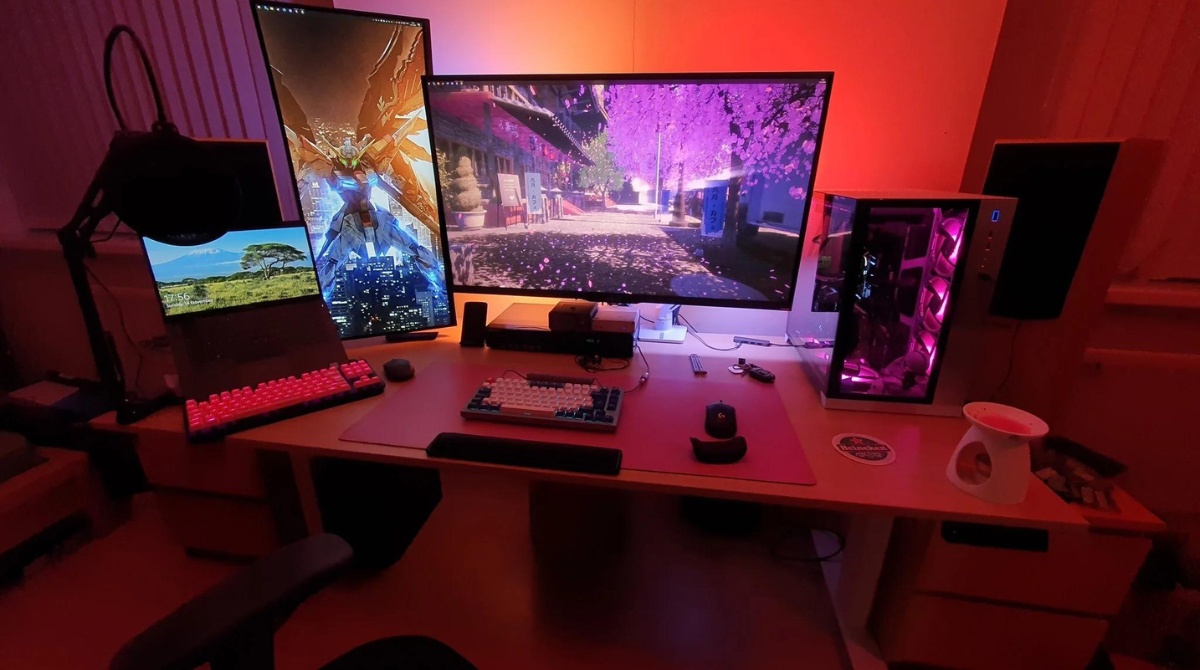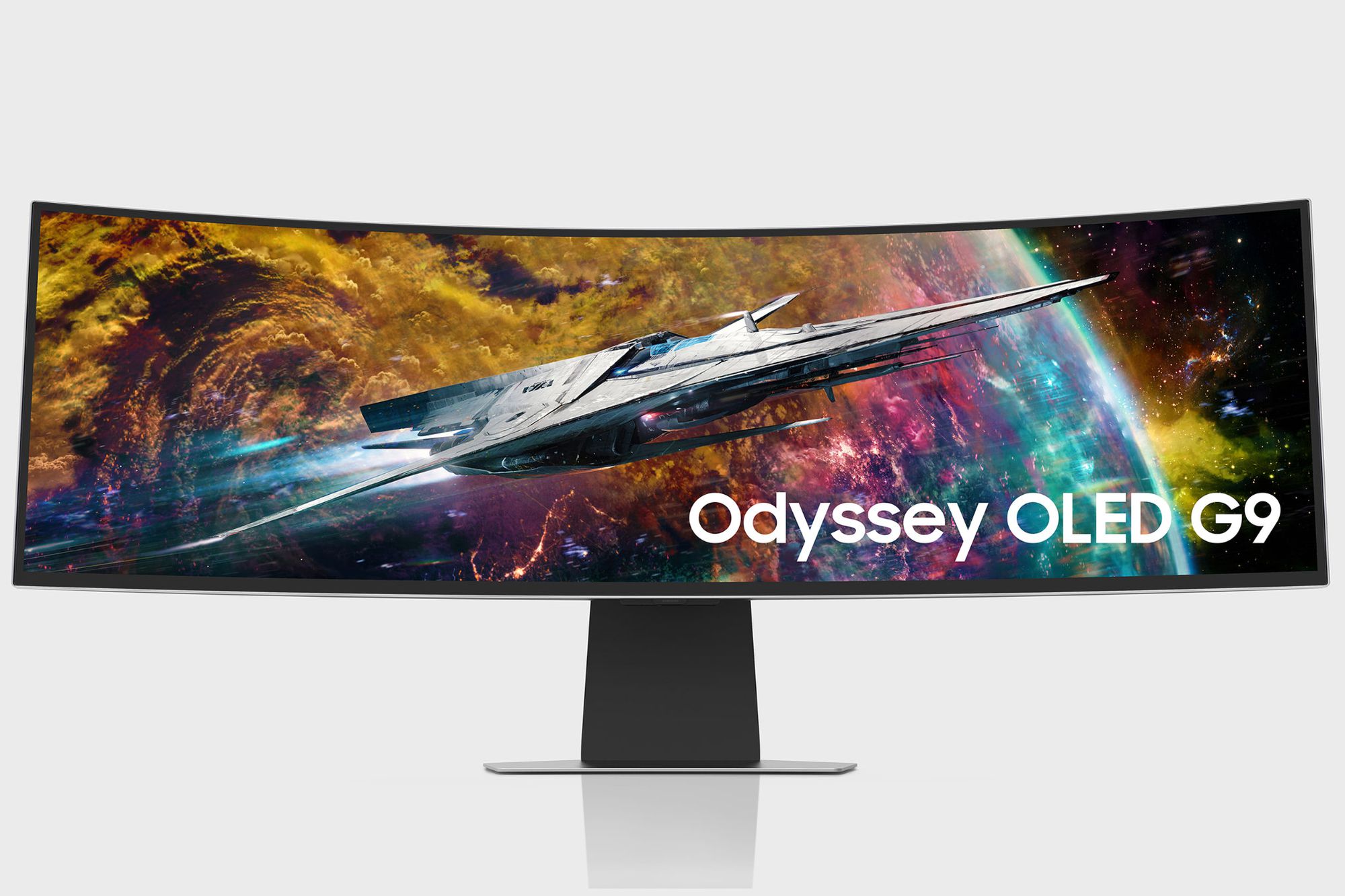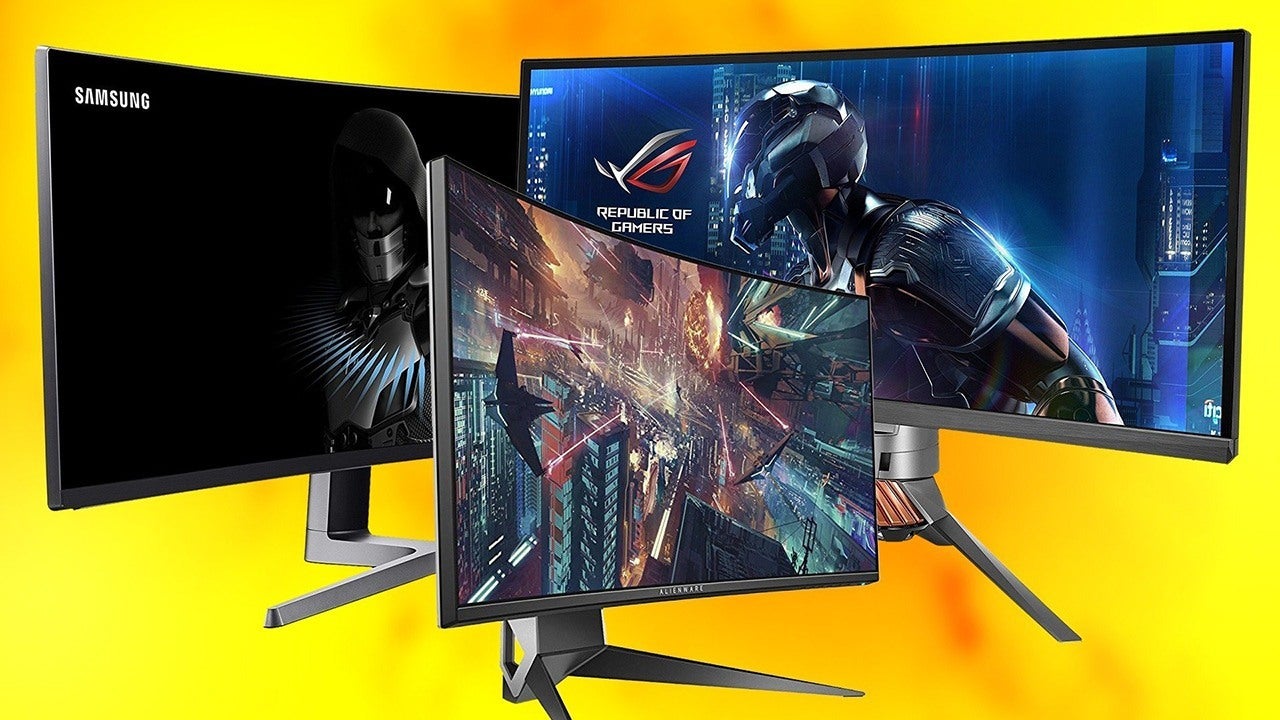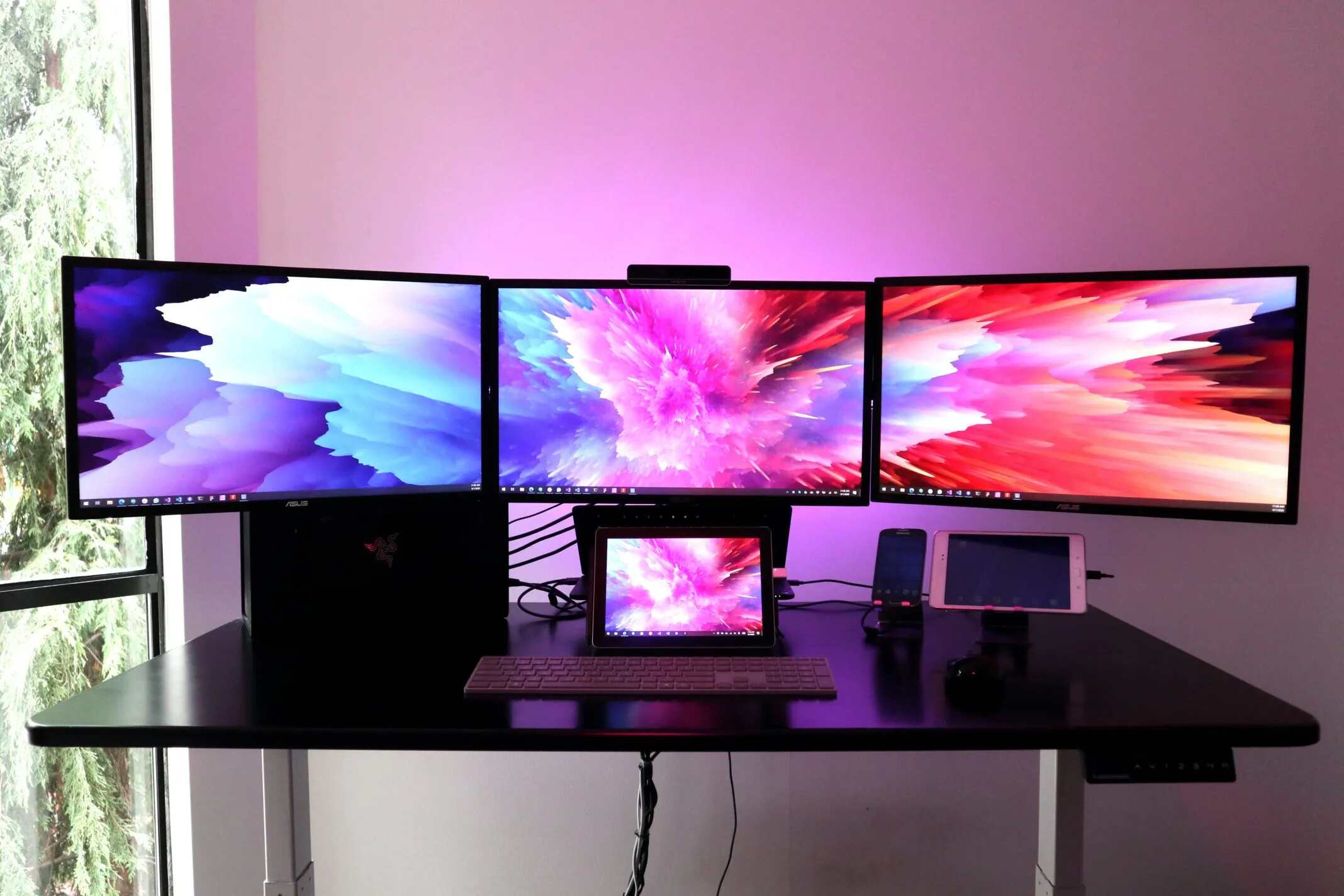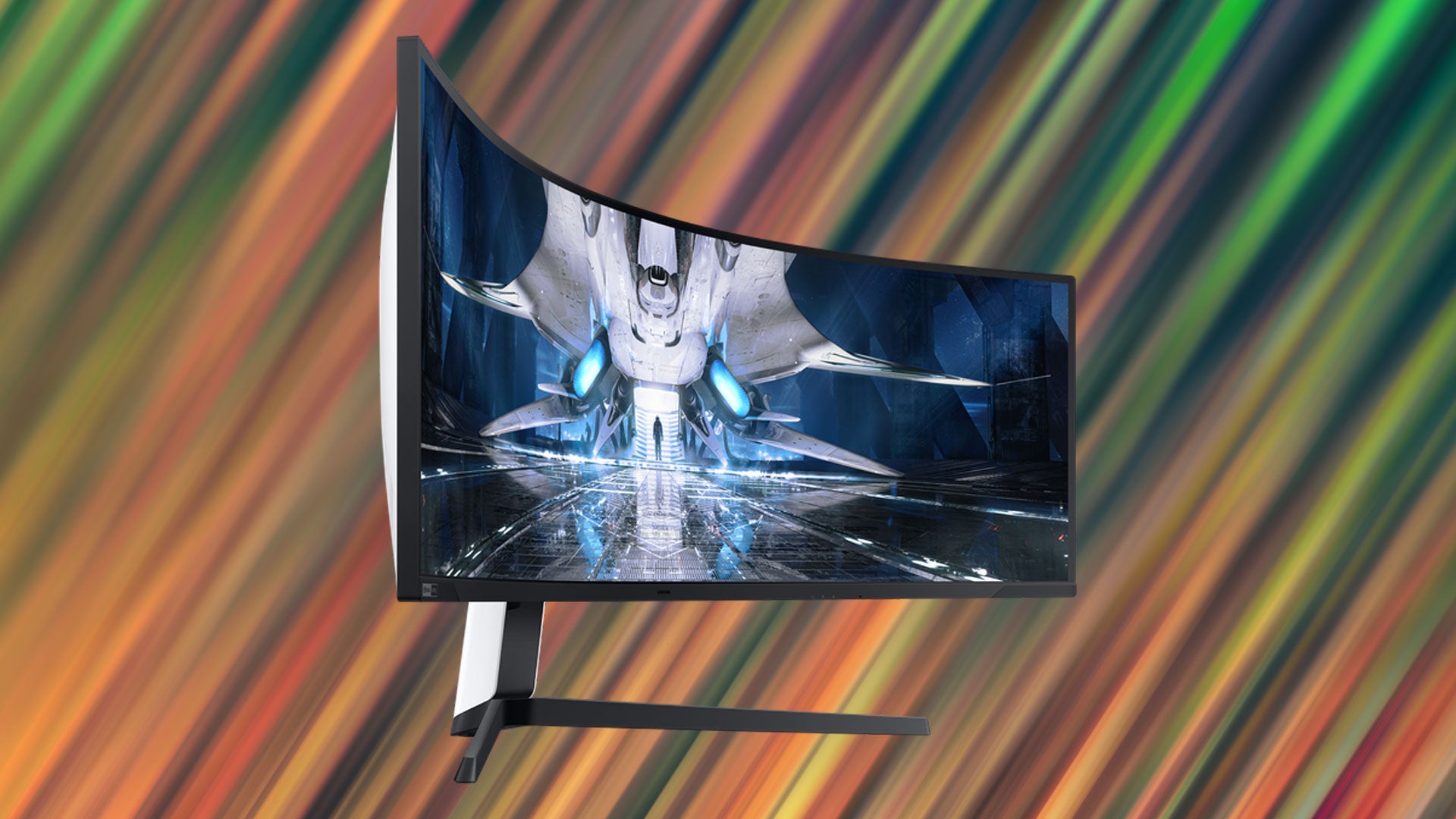Introduction
Welcome to our guide on choosing the right graphics card to run an ultrawide monitor in 4K for gaming. As gaming technology continues to advance, the demand for high-resolution displays has also grown. Ultrawide monitors, with their wide aspect ratios and immersive experience, have become increasingly popular among gamers.
But running games in 4K resolution on an ultrawide monitor requires a powerful graphics card that can handle the increased pixel count. In this guide, we will explore what exactly an ultrawide monitor is, what “4K” means for a graphics card, and the factors to consider when choosing the right graphics card for an ultrawide 4K gaming setup.
Ultrawide monitors are display screens that have an aspect ratio wider than the standard 16:9. Instead of the usual rectangular shape, they offer a wider field of view, allowing you to see more content on the screen. These monitors come in various sizes, ranging from 29 inches all the way up to a whopping 49 inches or more.
The term “4K” refers to the screen resolution, which is approximately 4000 pixels horizontally. A resolution of 3840×2160 pixels is considered as the standard 4K resolution, commonly referred to as Ultra HD (UHD). With four times the number of pixels compared to a Full HD display, 4K provides incredibly sharp and detailed visuals.
However, running games at 4K resolution requires a powerful graphics card to handle the increased workload. When it comes to gaming on an ultrawide 4K monitor, not only do you need a graphics card capable of running games at such high resolution, but it also needs to handle the wider aspect ratio of the monitor without compromising performance.
Choosing the right graphics card for your ultrawide 4K gaming setup requires careful consideration of various factors. We’ll discuss these factors in detail, including the graphics card’s processing power, memory, cooling capabilities, and compatibility with your system’s power supply and connectors.
If you’re ready to take your gaming experience to new heights with an ultrawide 4K monitor, continue reading to discover our recommended graphics cards that can fulfill your gaming needs.
What is an Ultrawide Monitor?
An ultrawide monitor is a display screen that offers a wider aspect ratio compared to the standard 16:9 ratio found in most monitors. Instead of the traditional rectangular shape, ultrawide monitors have a wider and more panoramic screen, providing users with a more immersive viewing experience.
Typically, ultrawide monitors have an aspect ratio of 21:9 or even higher, allowing for more horizontal screen space. This extra screen real estate provides several advantages for various use cases, including gaming, multimedia editing, and productivity tasks.
One of the main benefits of an ultrawide monitor is its ability to enhance immersion in gaming. The wider aspect ratio allows for a wider field of view, making games feel more cinematic and realistic. Gamers can catch more details in their peripheral vision, giving them a competitive edge in fast-paced games where situational awareness is crucial.
Besides gaming, ultrawide monitors are also great for multimedia editing tasks. Imagine having a wider timeline while editing videos or a spacious workspace for photo editing software. With the extra screen space, you can have multiple windows open side by side, making multitasking more efficient and seamless.
Productivity is another area where ultrawide monitors shine. Whether you’re working with spreadsheets, coding, or content creation, the wider screen can accommodate more content without the need to constantly switch between windows. It allows for a more streamlined workflow, boosting productivity and reducing the need for additional monitors.
Ultrawide monitors come in various sizes, typically ranging from 29 inches to 49 inches or more. The larger screen size allows for a more immersive experience, especially when combined with the wider aspect ratio. However, it’s essential to consider your desk space and viewing distance when choosing the right size for your needs.
When it comes to connectivity, ultrawide monitors usually offer a range of ports, including HDMI, DisplayPort, and USB-C. Some models may also include built-in speakers, USB hubs, and other convenient features to enhance the overall user experience.
Overall, ultrawide monitors offer an exciting alternative to traditional displays, providing a wider aspect ratio, immersive experience, and increased productivity. Whether you’re a gamer, content creator, or a professional seeking a more efficient workspace, an ultrawide monitor can elevate your digital experience to new heights.
What does “4K” mean for a graphics card?
When it comes to the capabilities of a graphics card, “4K” refers to the resolution that the card can support. In the context of monitors and displays, 4K resolution means having approximately 4000 horizontal pixels, resulting in stunningly detailed and crisp visuals.
More specifically, the standard 4K resolution is 3840×2160 pixels, also known as Ultra HD (UHD). This resolution offers four times the pixel count compared to a Full HD (1920×1080) display, resulting in incredibly sharp images and lifelike graphics.
For a graphics card to run games or content at 4K resolution, it needs to have sufficient processing power and memory to handle the increased workload. The card is responsible for rendering and displaying the graphics on the monitor, so it must be capable of processing and outputting a vast number of pixels in real-time.
Running games at 4K resolution is more demanding than running them at lower resolutions. The increased pixel count puts a higher strain on the graphics card, as it needs to push out more information to the monitor. This requires a higher level of performance and more processing power from the graphics card.
Not all graphics cards are created equal when it comes to supporting 4K resolution. Some lower-end or older graphics cards may struggle to run games smoothly at 4K, resulting in lower frame rates and compromised visual quality. On the other hand, high-end graphics cards designed for gaming can handle the demands of 4K gaming more effectively.
In addition to processing power, the amount of VRAM, or video memory, on the graphics card also plays a crucial role in supporting 4K resolution. VRAM is dedicated memory that the graphics card uses to store and access graphical data. The higher the VRAM capacity, the more graphical data the card can handle, resulting in smoother performance and better overall visual quality at higher resolutions.
It’s important to note that running games at 4K resolution requires not only a compatible graphics card but also a 4K monitor that supports this resolution. Both the graphics card and the monitor need to be capable of handling 4K resolution to fully experience the benefits of higher pixel density and increased visual fidelity.
In summary, “4K” for a graphics card refers to the card’s ability to support a resolution of 3840×2160 pixels, or Ultra HD (UHD). Higher processing power and adequate VRAM are necessary to run games smoothly at 4K, providing gamers with sharp and detailed visuals that enhance the overall gaming experience.
Factors to consider when choosing a graphics card for an Ultrawide 4K monitor
Choosing the right graphics card for your ultrawide 4K monitor is crucial to ensure smooth performance and optimal visual quality. Here are some important factors to consider when making your decision:
Processing Power: A graphics card with sufficient processing power is essential for running games at 4K resolution on an ultrawide monitor. Look for cards with high CUDA core or stream processor counts, as well as high clock speeds. These specifications indicate the card’s ability to handle the increased pixel count and graphics processing demands.
VRAM (Video Memory): Having ample VRAM is crucial for smoothly rendering and displaying graphics on an ultrawide 4K monitor. Choose a graphics card with a high VRAM capacity, preferably 8GB or more, to ensure that it can handle the large amount of graphical data associated with higher resolutions without causing performance bottlenecks.
Cooling Solution: Ultrawide 4K gaming can put a significant strain on the graphics card, generating heat during intense gaming sessions. Look for graphics cards with robust cooling solutions, such as advanced cooling fans or liquid cooling systems, to keep temperatures in check and ensure consistent performance for extended periods.
Power Supply and Connectors: Check the power requirements of the graphics card and ensure that your power supply can handle the card’s power demands. Additionally, make sure that your power supply has the necessary connectors to connect the card properly. Some high-end graphics cards may require multiple power connectors, so double-check compatibility with your system’s power supply.
Connectivity: Ensure that the graphics card has the necessary ports to connect to your ultrawide 4K monitor. Most modern graphics cards offer HDMI and DisplayPort outputs, but verify the specific requirements of your monitor to ensure compatibility. Some cards may also have USB-C or DVI ports for additional connectivity options.
Compatibility with your System: It’s important to ensure that the graphics card you choose is compatible with your system’s motherboard and CPU. Check for compatibility with your system’s PCIe slot version and make sure your power supply has enough wattage to support the graphics card’s power requirements.
Brand and Warranty: Consider the reputation of the graphics card manufacturer and the warranty provided. Opting for reputable brands with a track record of reliable products and excellent customer support can provide peace of mind and quick resolution in case of any issues.
By taking these factors into account, you can select a graphics card that perfectly complements your ultrawide 4K monitor, delivering impressive performance, stunning visuals, and an immersive gaming experience.
Recommended graphics cards for Ultrawide 4K gaming
When it comes to ultrawide 4K gaming, choosing the right graphics card is paramount to ensure smooth gameplay and optimal visual performance. Here are some recommended graphics cards that are well-suited for gaming on an ultrawide 4K monitor:
- NVIDIA GeForce RTX 3080: A powerful graphics card from NVIDIA’s latest RTX 30 series, the RTX 3080 offers exceptional performance with its high CUDA core count, ample VRAM, and advanced ray-tracing capabilities. With its robust processing power, this card can handle demanding games at 4K resolution on an ultrawide monitor with ease.
- AMD Radeon RX 6900 XT: From AMD’s flagship RX 6000 series, the Radeon RX 6900 XT is a top-tier graphics card that delivers excellent performance for ultrawide 4K gaming. With its large VRAM capacity and high clock speeds, this card can handle the demanding visuals of 4K gaming while providing a smooth and immersive gameplay experience.
- NVIDIA GeForce RTX 3070: Positioned as a more affordable option compared to the RTX 3080, the RTX 3070 still packs a punch for ultrawide 4K gaming. It offers a balance of price and performance, making it an attractive choice for gamers looking to experience the benefits of an ultrawide 4K monitor without breaking the bank.
- AMD Radeon RX 6800 XT: Another high-performance graphics card from AMD, the Radeon RX 6800 XT delivers impressive speeds and capabilities for ultrawide 4K gaming. With its ample VRAM and cutting-edge features like hardware-accelerated ray tracing, this card is a solid choice for gamers looking for exceptional visual fidelity at 4K resolution.
- NVIDIA GeForce RTX 3060 Ti: Offering a more budget-friendly option for ultrawide 4K gaming, the RTX 3060 Ti is a capable graphics card that still delivers impressive performance. With its high clock speeds and ample VRAM, it can handle most games at 4K resolution on an ultrawide monitor, providing an enjoyable gaming experience.
These are just a few examples of graphics cards that are well-suited for ultrawide 4K gaming. It’s important to consider your budget, specific gaming needs, and the requirements of your ultrawide monitor when making your final choice.
Remember to do thorough research, read reviews, and compare specifications to ensure that the graphics card you choose aligns with your gaming goals and provides the best possible performance for your ultrawide 4K gaming setup.
Conclusion
Choosing the right graphics card for an ultrawide 4K monitor is essential to ensure an exceptional gaming experience with smooth performance and stunning visuals. We explored what an ultrawide monitor is and the significance of “4K” for a graphics card, understanding the demanding requirements of running games at such high resolutions. We also discussed the factors to consider when selecting a graphics card, including processing power, VRAM, cooling, power supply compatibility, and connectivity.
Based on our recommendations, graphics cards like the NVIDIA GeForce RTX 3080 and the AMD Radeon RX 6900 XT offer top-of-the-line performance for ultrawide 4K gaming, providing smooth gameplay and impressive visual fidelity. The more budget-friendly options like the NVIDIA GeForce RTX 3070 and the AMD Radeon RX 6800 XT still deliver excellent performance for gamers seeking a balance between affordability and capability.
Remember to thoroughly research and consider your budget, specific gaming needs, and the compatibility of the graphics card with your system and monitor. Additionally, pay attention to the manufacturer’s reputation and warranty to ensure a reliable and satisfactory gaming experience.
With the right graphics card paired with your ultrawide 4K monitor, you can immerse yourself in the captivating world of gaming, enjoying the benefits of a wider field of view, increased detail, and an overall enhanced gaming experience. Whether you’re battling enemies in the latest AAA title or exploring vast virtual worlds, these graphics cards will help you make the most of your ultrawide 4K gaming setup.







